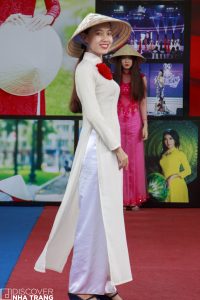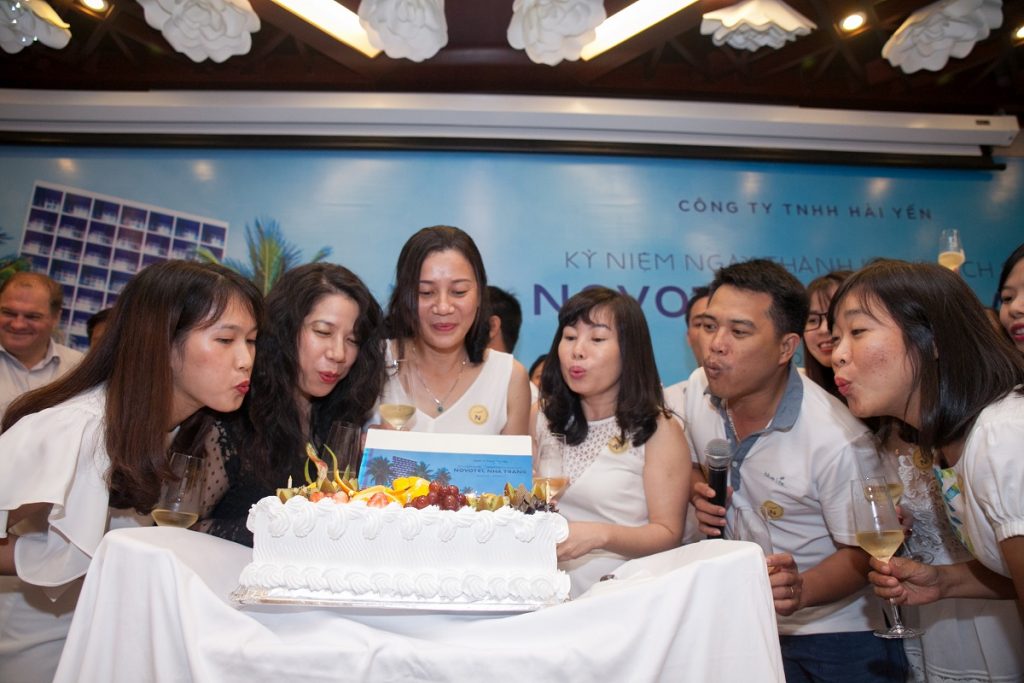AO DAI – The Iconic National Dress of Vietnam

The Ao Dai has become a symbol of Vietnamese identity, and the iconic image of graceful Vietnamese women in the flowing national dress complete with a conical hat is easily recognizable throughout the world. This symbol of Vietnam is more than just a national costume, but also a beautiful expression of Vietnamese spirit and national identity.
The Ao Dai is a long tunic with split sides that is worn over trousers by both men and women, and is a great source of pride to the Vietnamese people. This pride culminated in 1995, when the Miss International Pageant in Tokyo gave its Best National Costume award to the Vietnamese representative, Truong Quynh Mai. Even before such international recognition, the Ao Dai had long been the source of inspiration of artists and poets, and thus had become an institution in Vietnamese arts and literature.
Dai is a long tunic with split sides that is worn over trousers by both men and women, and is a great source of pride to the Vietnamese people. This pride culminated in 1995, when the Miss International Pageant in Tokyo gave its Best National Costume award to the Vietnamese representative, Truong Quynh Mai. Even before such international recognition, the Ao Dai had long been the source of inspiration of artists and poets, and thus had become an institution in Vietnamese arts and literature.
It first appeared during the reign of the Southern lord, Nguyễn Phúc Khoát (1739 – 1765). He wanted to create a separate identity for his people from the Trịnh Lord, who was in power as a puppet king of the declining Lê Dynasty. The lord decided to issue a formal dress rule for his residents where both men and women would wear trousers covered with a long, decorated gown. In an effort to win the support of the Cham People, whose lands south of the Gianh River had been invaded by the Vietnamese rulers, he borrowed inspiration from their traditional clothing. This was the beginning of the Ao Dai, and its popularity has increased until this day.
As such, it has persisted through multiple cultural and political changes in Vietnamese history. More than a thousand years of Chinese invasion, and nearly one hundred years of French colonial rule have seen it incorporate the Oriental and Western influences of the times. However, it has managed to remain very true to its original design and resisted many attempts of assimilation to become the traditional dress of Vietnam.
Nowadays, the Áo Dài has become the standard attire for Vietnamese people on formal occasions such as national holidays, wedding ceremonies and in the business and hospitality sectors. The male version is a form of brocade robe known as ‘Ao Gam’, made of thicker material, and generally only worn for marriage ceremonies. It is considered a rite of passage when a young girl receives her first Ao Dai, and much care and thought is put into choosing the best materials and design. In addition, most schools require that the female students wear the Ao Dai at least one day per week, as a way of preserving and promoting the national tradition.
Covering the entire body, the dress is tight fitting and designed to accentuate the curves of the woman while preserving dignity and modesty. There is an old saying in Vietnamese that “the Ao Dai covers everything but hides nothing”, and in this way, it is an excellent representation of the natural conservatism of the cultural mindset. In Vietnam, as well as among its emigrant communities around the globe, the Ao Dai Beauty Pageant has become a staple in the entertainment industry. Many well-known Vietnamese fashion designers devote their entire careers to develop new looks for the Ao Dai, and it has become a celebrated international fashion piece – even featured on catwalks in the USA and beyond.



